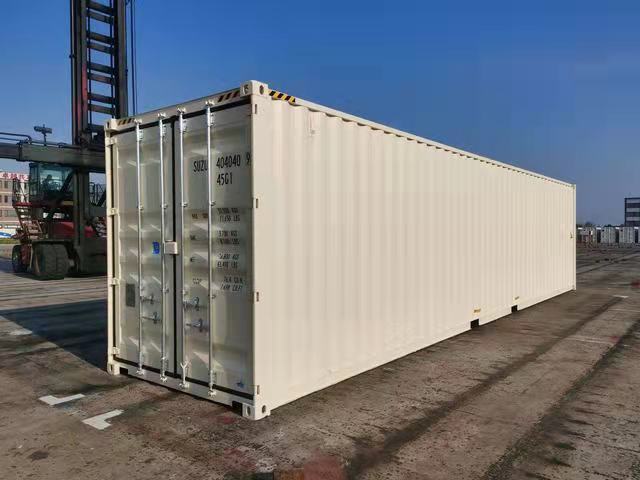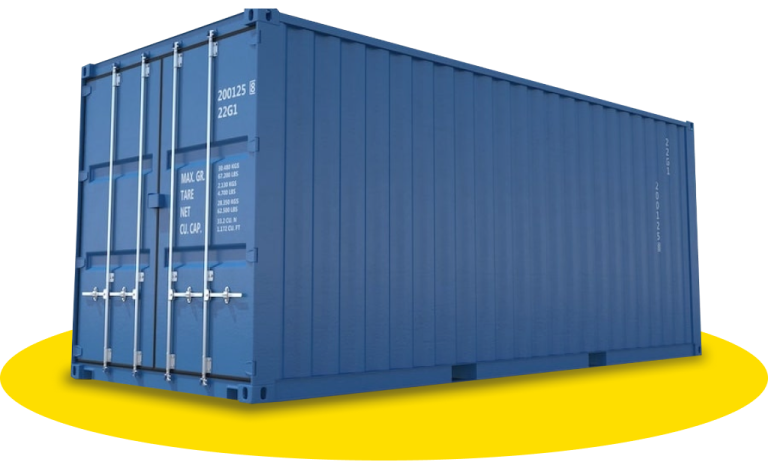6 Must-Know Tips When You Shop New Shipping Container 40 x 8 x 9.6 for Urban Projects
6 Must-Know Tips When You Shop New Shipping Container 40 x 8 x 9.6 for Urban Projects
Blog Article
The Ultimate Guide to Picking the Right Delivery Container for Your Requirements
When it concerns choosing the ideal shipping container, understanding your particular demands is vital. You'll intend to think about aspects like size, kind, and product to assure you make the very best option. From common dimensions to specialized alternatives, there's a great deal to check out. Plus, budgeting for both the container and any kind of alterations can make a huge distinction. Allow's break down the essential aspects to help you discover the perfect fit for your needs.
Comprehending Delivery Container Sizes
When you're picking a delivery container, comprehending the various sizes readily available is critical for making the ideal decision. Shipping containers generally come in common sizes of 20 and 40 feet, yet you'll additionally discover other dimensions. Knowing the size you need depends upon what you plan to store or transport.If you're relocating smaller sized products, a 20-foot container could be suitable, while larger shipments typically call for a 40-foot container. Remember that the height can also differ; high cube containers provide added vertical room, which can be useful for taller goods - Shop New Shipping Container 40' x 8' x 9’6".Before choosing, measure your cargo, and take into consideration just how much space you'll need for filling and dumping. Always aspect in prospective future demands-- choosing a somewhat bigger container might save you inconvenience down the line. Ultimately, picking the right dimension will improve effectiveness and assure your products are safe during transportation
Kinds of Shipping Containers Available
There are several kinds of shipping containers offered, each developed for specific objectives and cargo needs. The standard dry container is functional, excellent for basic cargo. If you're delivering disposable items, take into consideration a chilled container, which maintains a regulated temperature level. For oversized items, high dice containers provide extra height, suiting taller loads.If you need to transport heavy equipment or devices, flat shelf containers supply a tough base without wall surfaces. At the same time, open-top containers permit very easy loading of high cargo, with a removable tarp covering for security. If you're seeking adaptability, consider a collapsible container that can be conveniently saved when not in use.Lastly, specialized containers like container containers are made use of for fluids, while vented containers are designed for bulk cargo that requires air flow. Knowing your freight kind will help you choose the best container to satisfy your shipping needs successfully.
Material Considerations for Durability
When selecting a shipping container, the material plays a vital role in its sturdiness. You'll intend to weigh the advantages of steel versus aluminum, especially regarding deterioration resistance. Recognizing these elements can help you make a more educated option for your delivery needs.
Steel vs. Aluminum Containers
How do you select between steel and aluminum containers for your shipping needs? Beginning by considering toughness. Steel containers are durable and deal excellent stamina, making them perfect for heavy loads and severe problems. They resist damage from effects and are frequently more economical, which can be a major variable for budget-conscious buyers.On the other hand, light weight aluminum containers are light-weight, which can conserve you on delivery costs. They're much easier to navigate and are a terrific selection if you require to carry products regularly. Nonetheless, aluminum is typically more costly and less robust than steel. Evaluate your specific requirements thoroughly, including weight, price, and the kind of freight you'll be delivery, to make the appropriate choice for your scenario.
Corrosion Resistance Elements
Selecting the appropriate product does not simply include weight and cost; deterioration resistance plays a significant function in resilience. When selecting a shipping container, think about the environment it'll face. Steel containers, while strong, can corrosion otherwise properly treated. Search for alternatives with safety coatings or galvanization to improve their life expectancy. Light weight aluminum, on the various other hand, provides natural rust resistance, making it ideal for seaside areas or humid conditions. Nevertheless, it can be a lot more pricey. Additionally, analyze the container's use-- if it'll be subjected to chemicals or severe weather, prioritize materials that can hold up against these conditions. Buying a corrosion-resistant container currently can save you from expensive repair work or replacements down the line. Pick carefully for lasting benefits.
Alterations and Modification Options
Delivering containers aren't just for carrying products; they can be transformed to meet your particular needs with various adjustments and personalization alternatives. You can convert a conventional container right into a relaxing Click This Link workplace, a momentary retail shop, and even a personal gym. The possibilities are virtually endless.Think regarding including windows, insulation, or air flow to improve convenience. You might likewise think about electric circuitry, pipes, or also personalized shelving to enhance capability. If security's a problem, enhanced locks can supply tranquility of mind.For visual appeal, you can paint the container or add a special design to make it stick out. Do not fail to remember regarding floor covering options-- whether you want long lasting plywood or something more advanced, it can elevate the space.Ultimately, customizing your delivery container to match your requirements can enhance functionality and create a distinct setting that reflects your style.
Assessing Your Transportation Needs
When it concerns utilizing your changed shipping container, understanding your transportation needs is essential. Beginning by establishing what you'll be delivery-- whether it's hefty equipment, retail products, or personal things. Each kind of freight has different needs relating to size, weight, and accessibility.Next, take into consideration the range and mode of transport. Are you delivering locally, across the country, or globally? This impacts the container's style and capability. If you're making use of trucks, guarantee your container fits conventional measurements for simple loading and unloading.Additionally, assume regarding transit problems. Will your things require unique defense from climate or temperature level variations? If so, you may need insulation or air flow attributes in your container.Lastly, analyze exactly how often you'll be transporting items. Constant shipments might need a much more resilient and functional container to fulfill continuous demands. By dealing with these aspects, you'll be well-prepared to select the right delivery container for your requirements.
Budgeting for Your Delivery Container
Setting a budget for your shipping container is important for guaranteeing a smooth acquiring process. Initially, identify just how much you can afford to spend. Maintain in mind that prices can vary substantially based upon size, problem, and type. New containers generally set you back a lot more, but used ones can provide significant savings.Next, take into consideration any type of additional prices you could incur, such as transportation fees, shipment costs, and alterations. If you intend to personalize the container, consider those expenses too. Research study different distributors to contrast prices and discover the finest bargain that satisfies your needs.Don' t neglect to include any kind of permits or laws that might put on your purchase and use of the container. By plainly outlining your budget, you'll be better prepared to make enlightened choices, ensuring you get the ideal container without damaging the financial institution.
Maintenance and Take Care Of Durability
To guarantee your shipping container lasts for many years, routine upkeep is crucial. Beginning by evaluating the exterior for rust, dents, and damages. If you identify any issues, resolve them immediately to avoid further deterioration. Tidy the container occasionally, both throughout, to remove dust, debris, and wetness that can lead to corrosion.Ensure the doors secure properly and lubricate the joints to avoid corrosion and sticking. If you're utilizing the container for storage space, take into consideration adding ventilation to minimize moisture and mold and mildew growth. For extra defense, apply a rust-inhibiting paint or sealant annually.If your container's situated in a severe setting, like coastal areas, you could require to enhance maintenance regularity. Keep an eye on the flooring, also; any kind of indications of wear ought to be fixed as soon as possible. With these basic actions, you'll expand the life more helpful hints of your shipping container substantially.
Frequently Asked Inquiries
Exactly how Do I Discover a Dependable Shipping Container Distributor?
To find a trustworthy delivery container distributor, beginning by investigating on-line evaluations, requesting for suggestions from buddies or market contacts, and comparing costs. Constantly check their credentials and warranty they supply top quality containers that fulfill your needs.

Can I Lease a Shipping Container Rather Than Buying?
Yes, you can definitely rent out a delivery container rather than purchasing one. Numerous providers provide rental options, which can save you money and provide adaptability if you only need it for a brief period.
What Permits Are Required for Container Placement?

Are Shipping Containers Weatherproof and Appropriate for Outdoor Storage Space?
Yes, delivering containers are usually weatherproof, created to hold up against extreme problems. Their Shop New Shipping Container 40' x 8' x 9’6" robust building and construction keeps your products safe and secure and dry, making them suitable for outside storage. Simply guarantee appropriate ventilation to avoid wetness accumulation inside.
Exactly how Do I Transport a Delivery Container Once Acquired?

Report this page